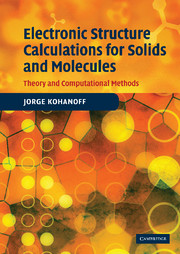Preface
Published online by Cambridge University Press: 29 May 2010
Summary
Very often when a postgraduate student begins a research activity in a new field, she or he is presented with a partial view of the big picture, according to the arena where the research group carries out its activity. For the student this implies narrowing the focus to a class of systems such as molecules, surfaces, liquids, defects, or magnetic systems, and to concentrate on a particular theoretical approach and one or a few specific computational techniques out of the many possibilities available. All this is perfectly understandable and reasonable because it is very difficult to absorb rapidly the knowledge accumulated during many decades, since the pioneering work of Hartree, Fock, Slater, Thomas, Fermi, Bloch, Dirac, and Wigner in the twenties and thirties, until the most recent developments in areas such as electronic correlation. This knowledge is built up during many years of practice in the field, participating in schools, conferences, and workshops that promote exchange and collaboration between the different subareas, discussing advantages and disadvantages of different approaches with colleagues around the world, and keeping up with the latest developments in the literature.
Although many excellent books and reviews are available in areas such as density functional theory, solid state physics, quantum chemistry, electronic structure methods, and Car–Parrinello simulations, it is desirable to have all this reference material condensed in a single book that may be used by a fresh graduate student, by a postdoc who is moving into the field, or by a researcher with experience in one or a few subareas who wants to broaden her or his horizons.
- Type
- Chapter
- Information
- Electronic Structure Calculations for Solids and MoleculesTheory and Computational Methods, pp. xi - xvPublisher: Cambridge University PressPrint publication year: 2006

